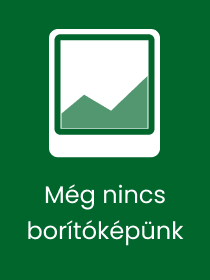
Bridging the Gap
Corrosion Science For Heritage Contexts
Sorozatcím: European Federation of Corrosion (EFC) Series; 73;
-
20% KEDVEZMÉNY?
- A kedvezmény csak az 'Értesítés a kedvenc témákról' hírlevelünk címzettjeinek rendeléseire érvényes.
- Kiadói listaár EUR 243.99
-
101 194 Ft (96 376 Ft + 5% áfa)
Az ár azért becsült, mert a rendelés pillanatában nem lehet pontosan tudni, hogy a beérkezéskor milyen lesz a forint árfolyama az adott termék eredeti devizájához képest. Ha a forint romlana, kissé többet, ha javulna, kissé kevesebbet kell majd fizetnie.
- Kedvezmény(ek) 20% (cc. 20 239 Ft off)
- Kedvezményes ár 80 956 Ft (77 101 Ft + 5% áfa)
Iratkozzon fel most és részesüljön kedvezőbb árainkból!
Feliratkozom
101 194 Ft

Beszerezhetőség
Megrendelésre a kiadó utánnyomja a könyvet. Rendelhető, de a szokásosnál kicsit lassabban érkezik meg.
Why don't you give exact delivery time?
A beszerzés időigényét az eddigi tapasztalatokra alapozva adjuk meg. Azért becsült, mert a terméket külföldről hozzuk be, így a kiadó kiszolgálásának pillanatnyi gyorsaságától is függ. A megadottnál gyorsabb és lassabb szállítás is elképzelhető, de mindent megteszünk, hogy Ön a lehető leghamarabb jusson hozzá a termékhez.
A termék adatai:
- Kiadó Elsevier Science
- Megjelenés dátuma 2025. augusztus 4.
- ISBN 9780443186905
- Kötéstípus Keménykötés
- Terjedelem518 oldal
- Méret 229x152 mm
- Súly 1000 g
- Nyelv angol 684
Kategóriák
Hosszú leírás:
Bridging the Gap: Corrosion Science For Heritage Contexts explores the decision-making processes for preserving heritage metals while also examining the collaborative, interdisciplinary relationships that underpin them. Through themed chapters, the book is designed to develop and strengthen collaboration between these three groups of professionals, creating a synergy that benefits research and practice for the preservation of heritage metals. It builds an overview of metals conservation across a broad range of heritage contexts, from indoor museum displays to fixed outdoor structures and moving objects.
Researchers and practitioners provide critical insights into corrosion problems within heritage, current corrosion mitigation procedures, and the evidence supporting best practice guidance. The book will be a valuable reference resource for corrosion and corrosion protection scientists, heritage preservation scientists, conservation practitioners, and students studying preservation of cultural objects.
Tartalomjegyzék:
1. Introduction
PART ONE: Preserving Heritage Materials in Perpetuity: Ethics and Constraints
1.1. Reflections on Patina and Surface Layers on Metals
1.2. Love: The main ingredient in successful coatings
1.3. Managing the Preservation of a Large Military Service Collection at the Tank Museum, Bovington UK: Challenges and collaborative research
1.4. Hydrogen Reduction of Archaeological Iron: A reappraisal
1.5. A Monumental Mission: Managing Treatment Lifetimes for Industrial-Scale Marine Iron Alloy Artifacts
1.6. SS Great Britain
1.7. Large Collections of Small Metal Objects: Managing their preservation via desiccated microclimates
1.8. Experiencing Heritage Objects: Balancing material and functional originality
PART TWO: The Value of Interdisciplinarity
2.1. Interdisciplinarity in Conservation Education
2.2. Reconciling Industrial Methods with Private Conservation Practice
2.3. Transdisciplinary Collaboration for the Multi-Scale Description of Corrosion Structures in Metallic Heritage
2.4. Understanding and Manging the Corrosion of Chloride Infested Archaeological Iron: A conservation and corrosion science synergy
PART THREE: Methodologies for Corrosion Assessment
3.1. Cathodic Protection of Historical Metal-Hulled Shipwrecks: Complementary approach from on-site global measurements to multiscale characterization
3.2. Long-Term Marine Corrosion of Ferrous Objects and Shipwrecks and the Effects of Calcareous Deposition
3.3. Isotopic Labelling to Understand the Long-Term Corrosion of Iron in Atmospheric Conditions: The case of the staples of the Mutte tower of the Metz cathedral
PART FOUR: Novel Challenges and Treatments
4.1. The Development of Tailored Coatings to Protect Patinated Bronze in Outdoor Applications
4.2. Aluminium and its Alloys in Cultural Heritage: New challenges for conservation
4.3. Brass as a Gold Imitation Used in Book Painting: Influence of a binder on brass corrosion and possible fixatives for gold imitation
4.4. Metals in Association with Organic and Inorganic Materials: Marine composite artefacts
4.5. Dechlorination of Iron III Phases in Corrosion Layers for the Preservation of Archaeological Artefacts
4.6. Green Corrosion Mitigation and Conservation Strategies for Metal Heritage
4.7. Recent Research on the Use of Scanning Laser Systems for Cleaning Cultural Heritage Cu-Based Artifacts


Operation Pimento: My Great-Grandfather's Great Escape - a gripping story of heroism and sacrifice, perfect for all WW2 fans
8 116 Ft
6 899 Ft











